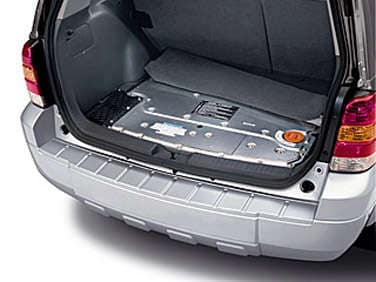Recent Articles
Popular Makes
Body Types
Hybrid Car Battery Technology

Of all recent futuristic technology, the hybrid battery takes the cake as far as most complex. Hybrid cars rely extensively on their batteries, more so than other types of vehicles because they provide power for one of the car’s two main engines. With that being said, there are many types of batteries out there and still more are being developed every day. The battery industry is currently working on the development of better-performing and more sophisticated technology that costs less, due to booming sales of the hybrid car.
Hybrid cars are powered by two types of technologies working together at once: the electric motor and the internal combustion (gasoline) engine. These engines work together to make the car extremely fuel efficient, often turning off the combustion engine when not in use such as at a red light and using regenerative brake technology to recharge the battery for the electric motor. Because the usage of the battery itself is so extensive, it becomes absolutely necessary to charge the battery at all times when not in use. The type of batteries used in a hybrid car must also have a higher capacity than regular batteries.
Fortunately for us and for the environment, hybrid cars do not use the typically problematic Nickel-Cadmium batteries, which you most commonly see as rechargeable batteries in small devices such as cell phones, digital cameras and remote-controlled toys. These batteries contain lead, which is highly toxic, harmful to the environment, and difficult to recycle. They also have a small energy capacity, which makes them inappropriate for the heavy-duty usage needed to run a hybrid car. These types of batteries can be found under the hood of almost every conventional gasoline-run vehicle, the image of which comes to mind when picturing what’s under the hood of a typical car.
Currently, this type of battery is being used in hybrid cars. Like its Nickel-Cadmium counterpart, this battery uses the same chemical nickel oxyhydroxide (NiOOH) to help it hold a charge. But unlike the Nickel-Cadmium batteries, which uses cadmium for the negative electrode, this type of battery uses a Nickel alloy called Nickel Metal-Hydride for the negative electrode. Due to the absence of Cadmium, which is considered environmentally toxic, this type of battery is more “green.” It is also safer to use and has a higher capacity than traditional Nickel-Cadmium batteries. The downside of this battery is that it still does not have the high-capacity to run a hybrid’s sophisticated electric motor without being charged as much as possible. It is also more expensive than most batteries due to the cost of Nickel. This is currently what keeps the cost of a hybrid car at a premium.
Next on the list of up-and-coming hybrid vehicle technology, the Lithium battery is currently powering small handheld devices such as laptops and cell phones. Lithium batteries have a higher capacity than other types of batteries, and they are also made more cheaply. Lithium batteries could enable hybrid cars to go much longer distances without using a single drop of gasoline, for distances anywhere from 50-100 miles. Although most hybrids are not plug-in models, this would be required with the current technology if these types of batteries were to be used. Another problem with these batteries is that they use cobalt in their formulas, which tends to explode. Automakers are scrambling to find an alternative to cobalt which would provide the same amount of power.
As technology becomes more and more sophisticated and streamlined, so will the batteries. They are likely to become smaller and safer, and have more energy. The fact that they can be made less expensively is on the horizon too, and could make hybrid vehicles more affordable for everyone.